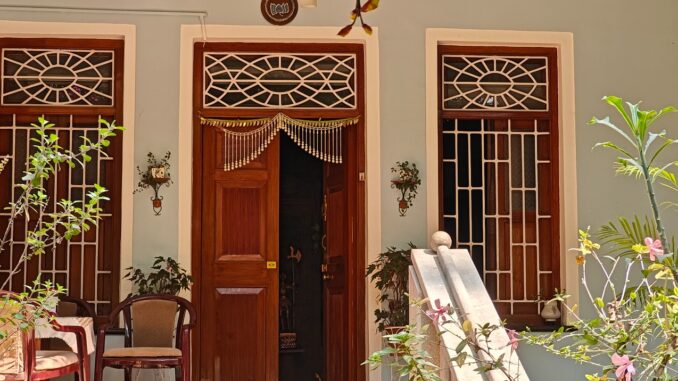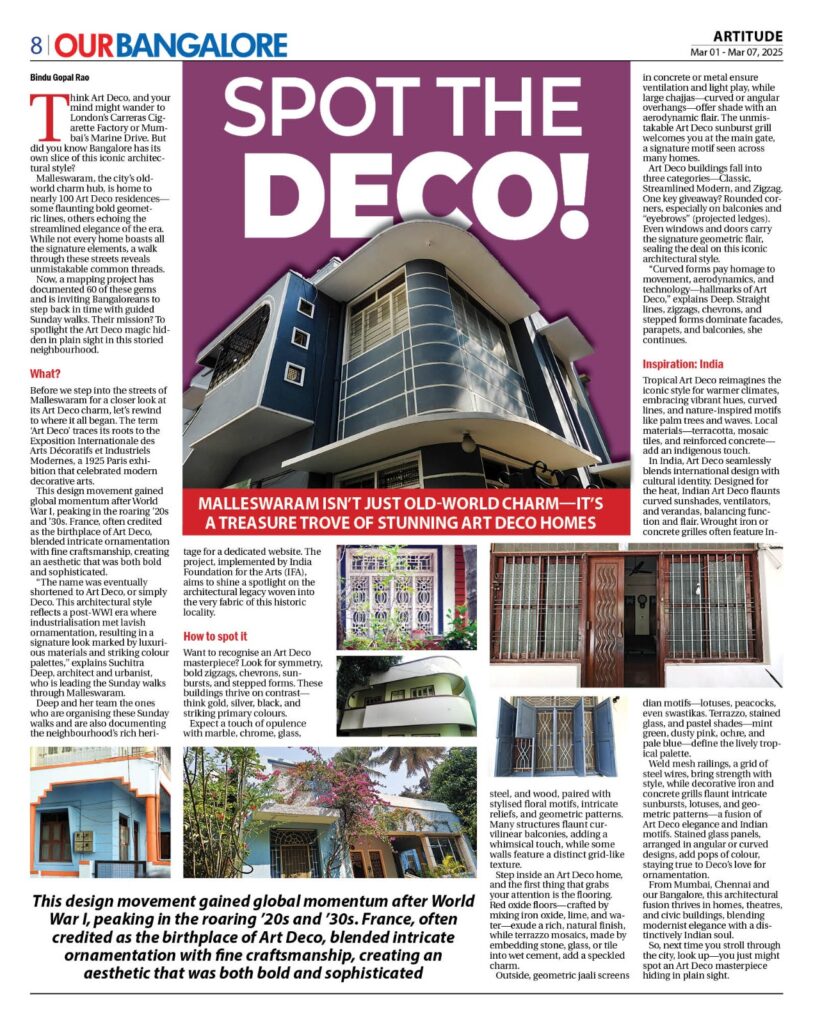
A design style that merges Cubism, Futurism, Fauvism and Bauhaus, Art Deco is characterised by elegance, luxury, and modernity.
Combining geometric patterns, bold colours, ornate craftsmanship, symmetrical designs, streamlined forms, art deco emphasises modernity and luxury at its core.
The name Art Deco comes from the Exposition Internationale des Arts Décoratifs et Industriels Modernes, a 1925 Paris exhibition showcasing modern decorative arts. Established as a global design movement, it gained momentum post the first world war when its popularity peaked. It is said that France was the birthplace of the art deco movement and has intricate decorative elements with an emphasis on craftsmanship.
Tropical Art Deco adapts the style to warmer climates, incorporating vibrant colours, curved lines, and motifs inspired by nature, such as palm trees and waves. It often uses local materials like terracotta and mosaic tiles. In the Indian context, Art Deco buildings often blend international design principles with local cultural elements, creating a unique architectural style.
Art Deco buildings in India sometimes include symbolic elements such as images of gods, sunbursts, or local flora, blending modernist design with cultural identity. These features are prominently visible in cities like Mumbai, Delhi, and Chennai, especially in residential buildings, theatres, and civic architecture.
Read the full story that first appeared in Our Bangalore dated March 01-07, 2025 here:


Leave a Reply